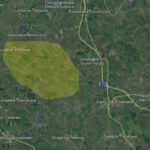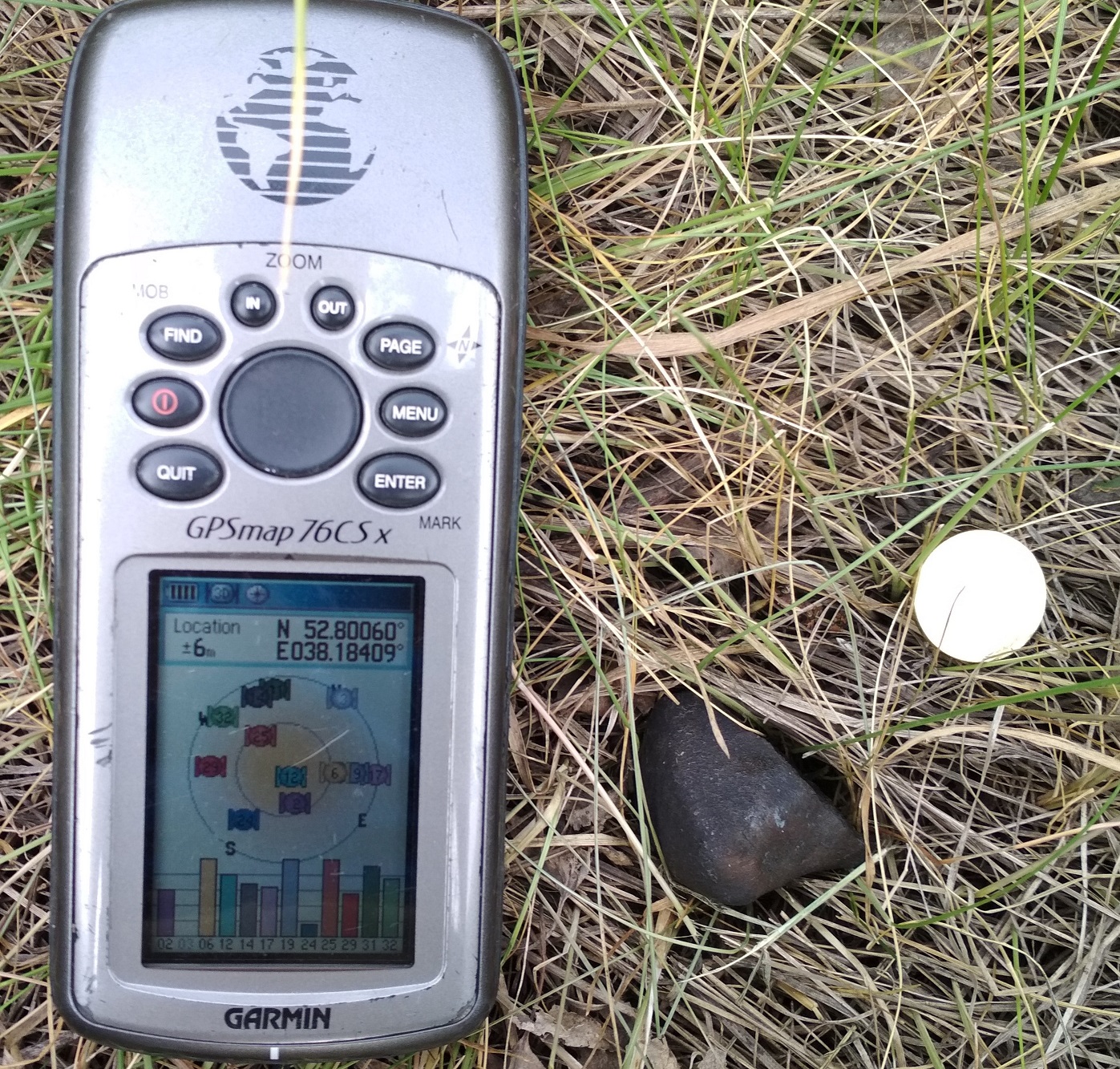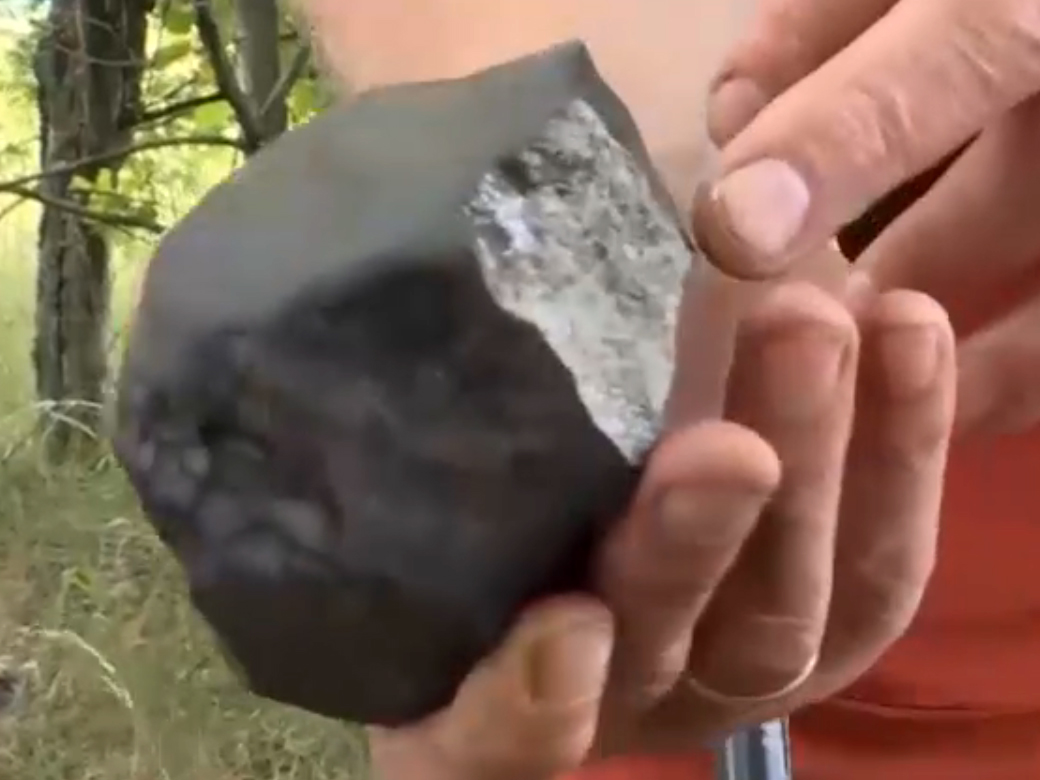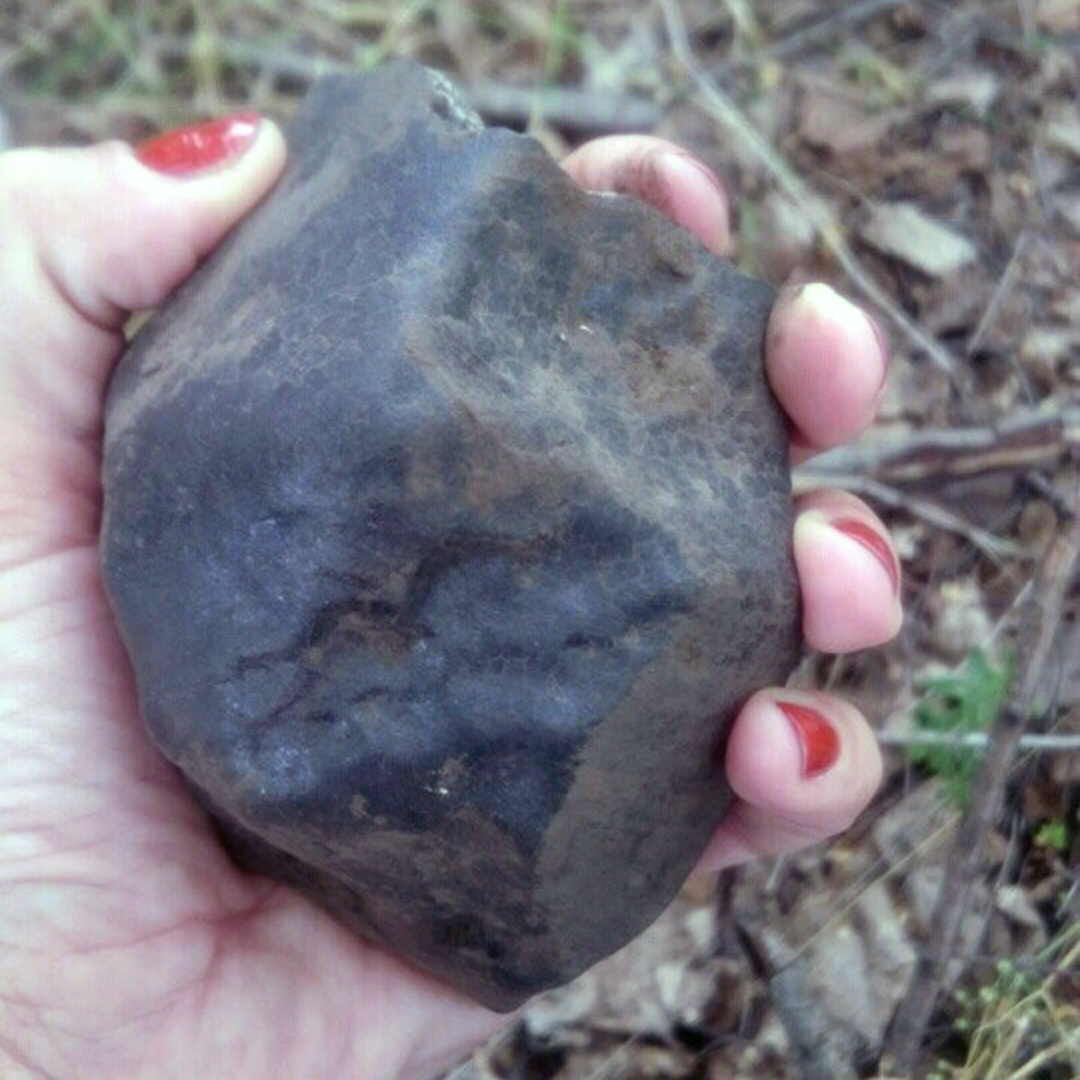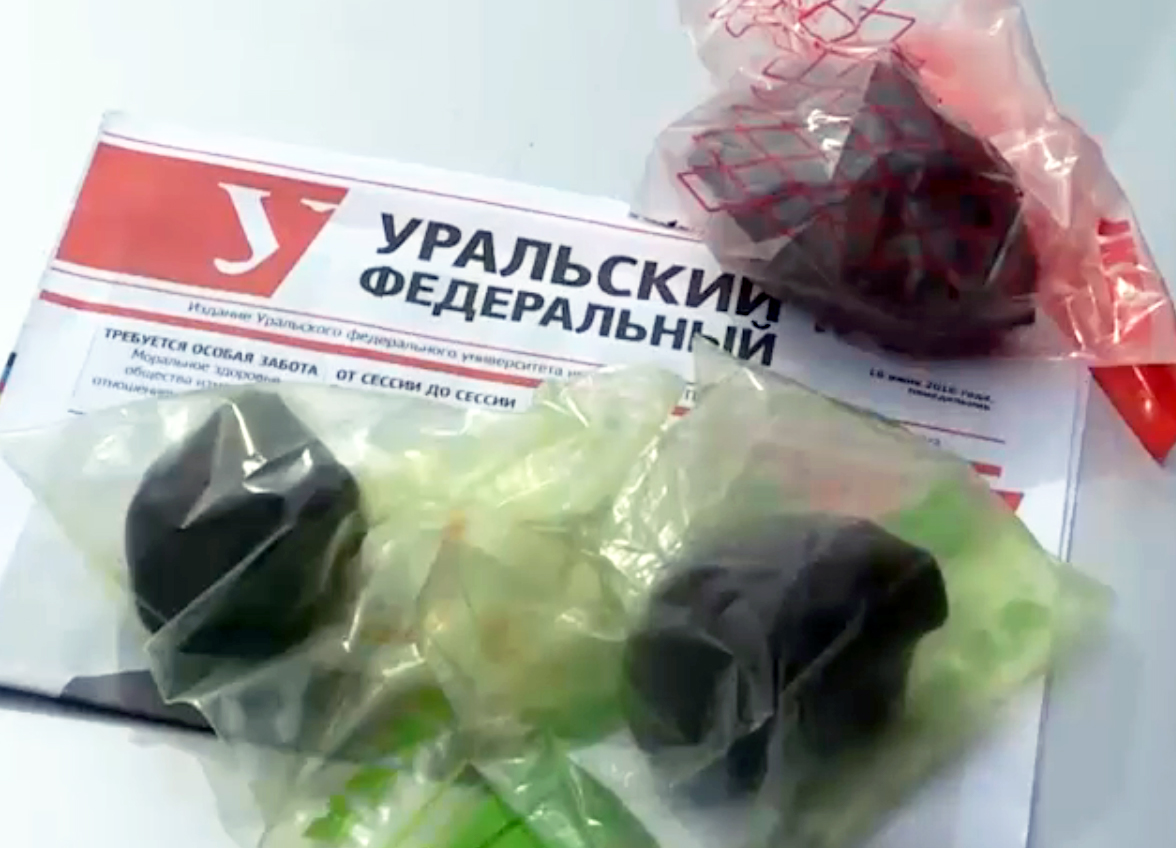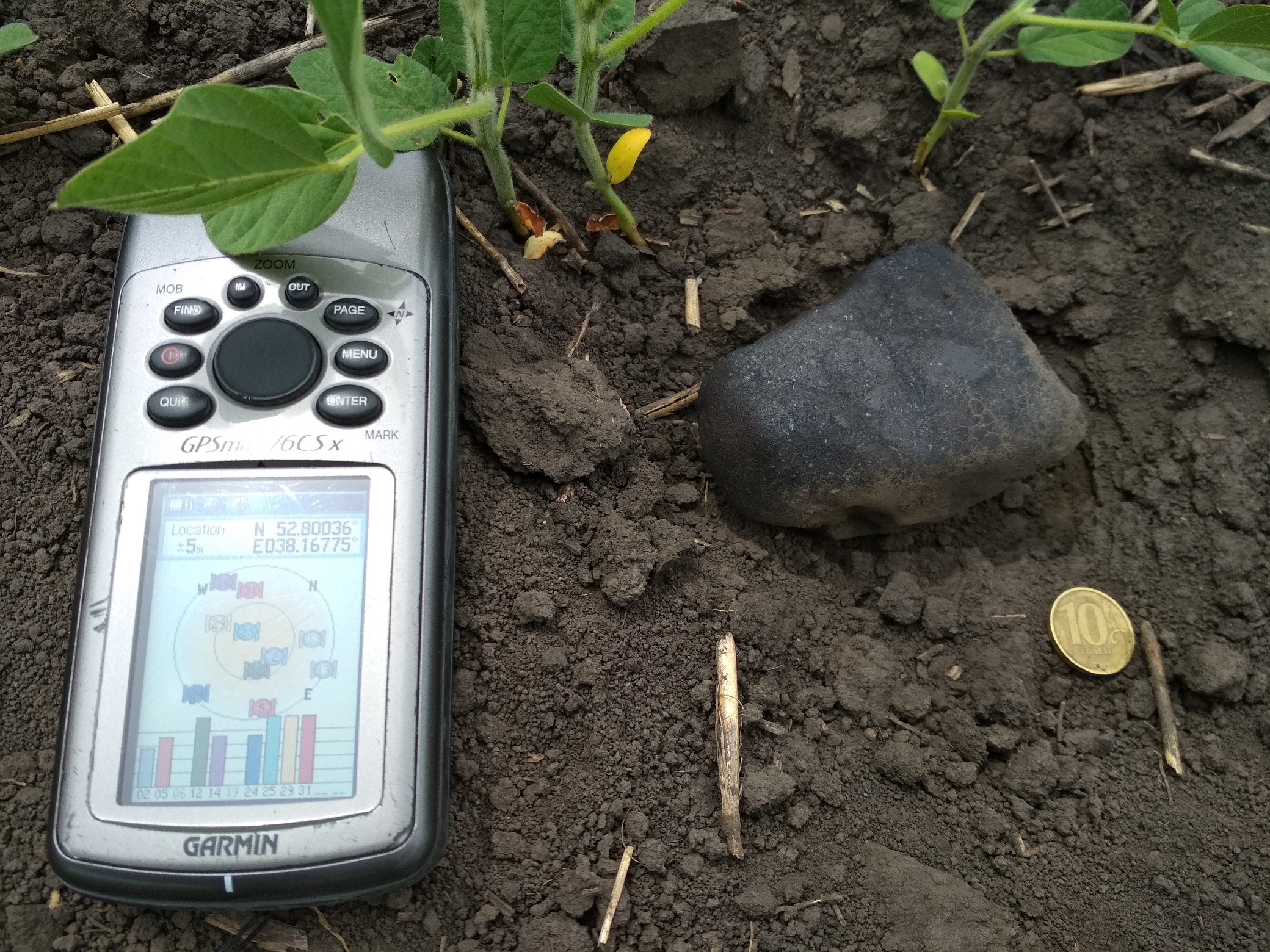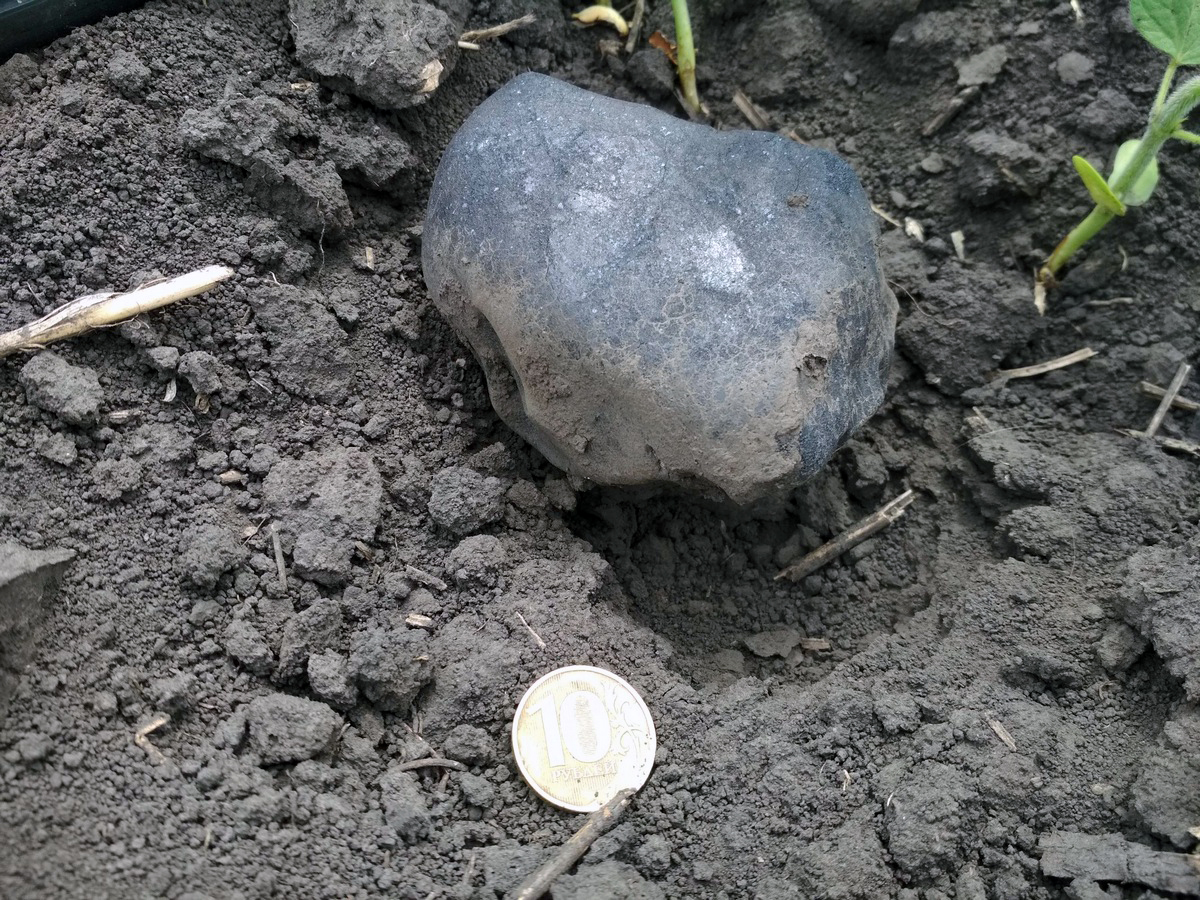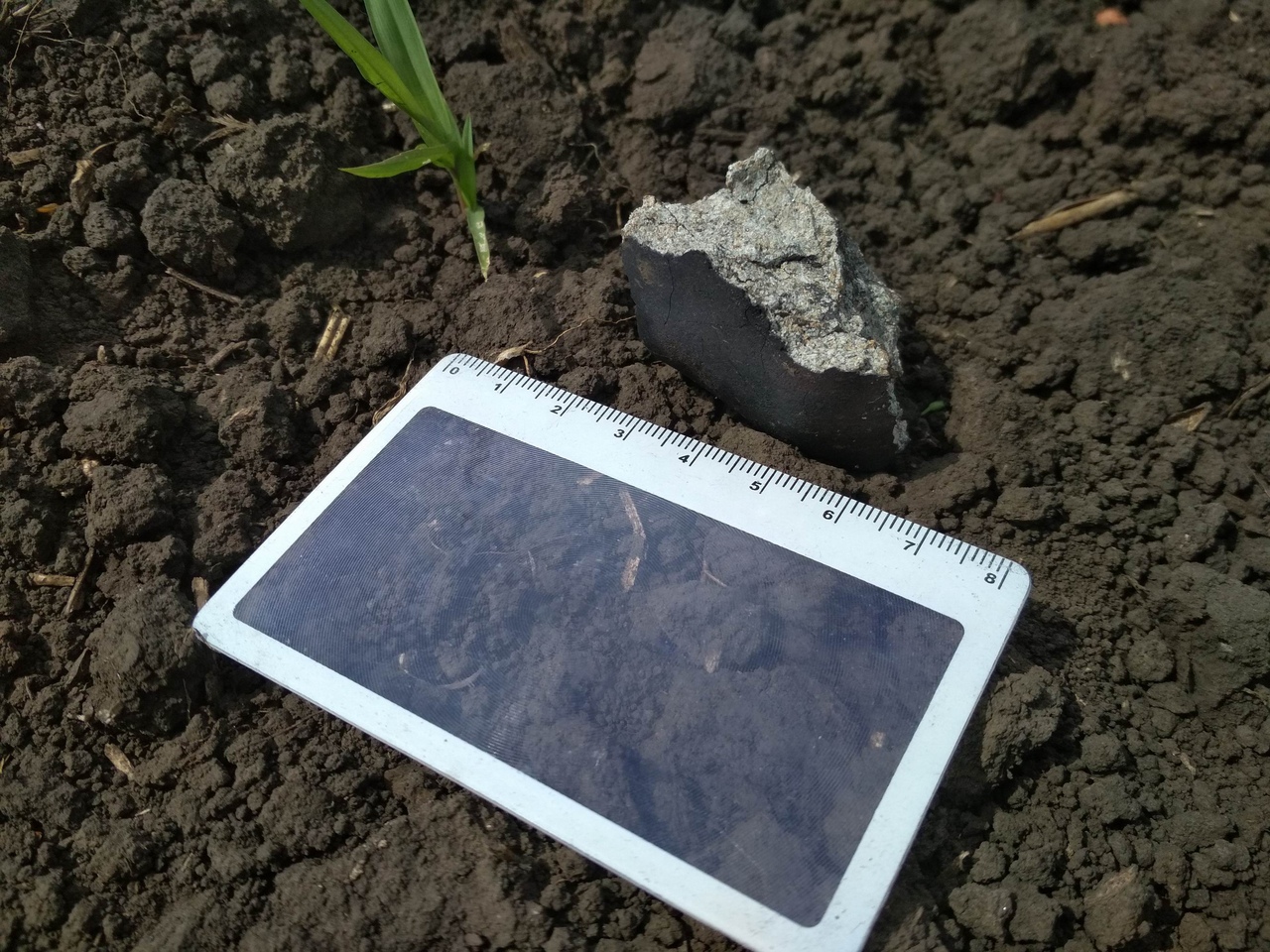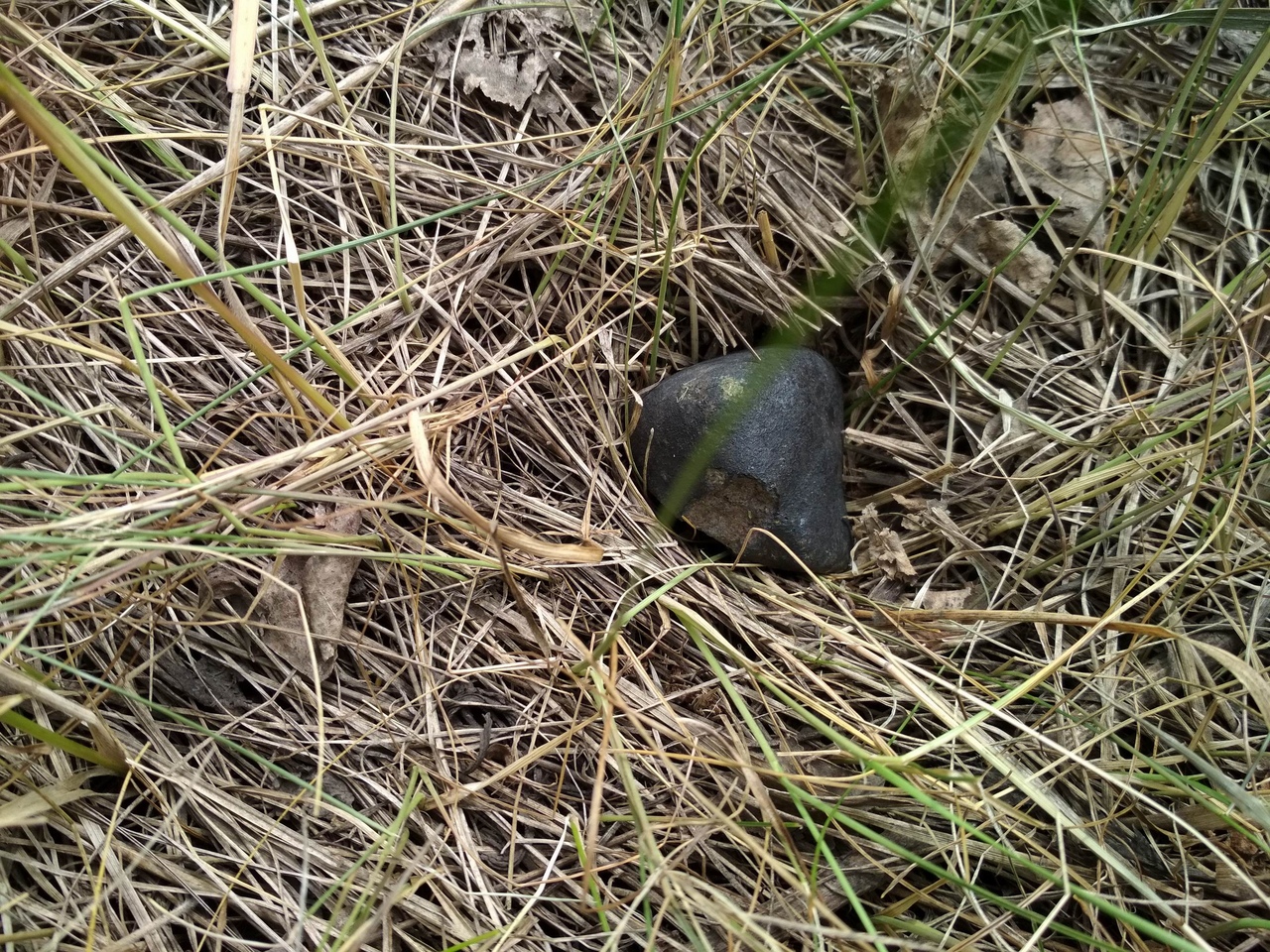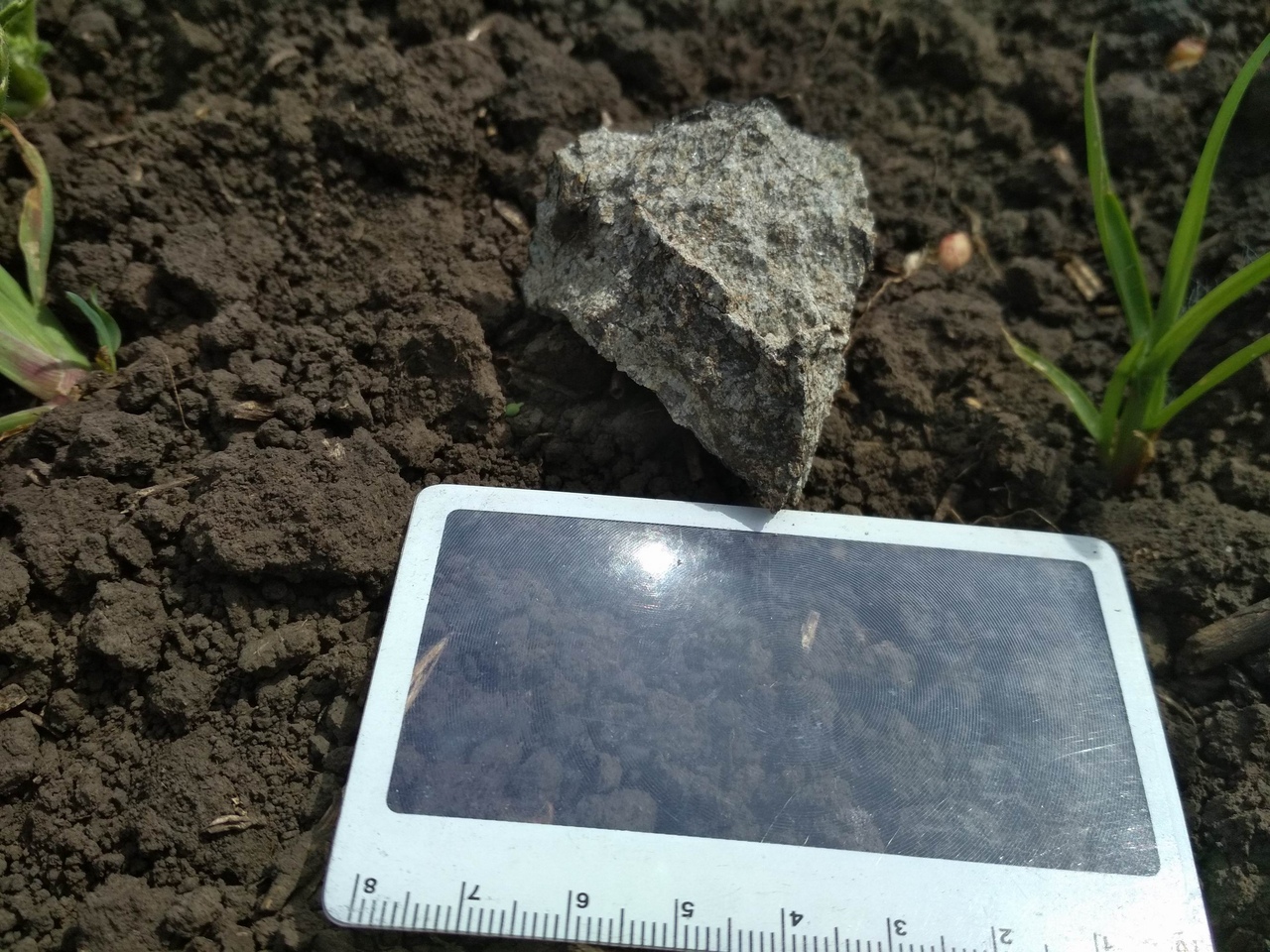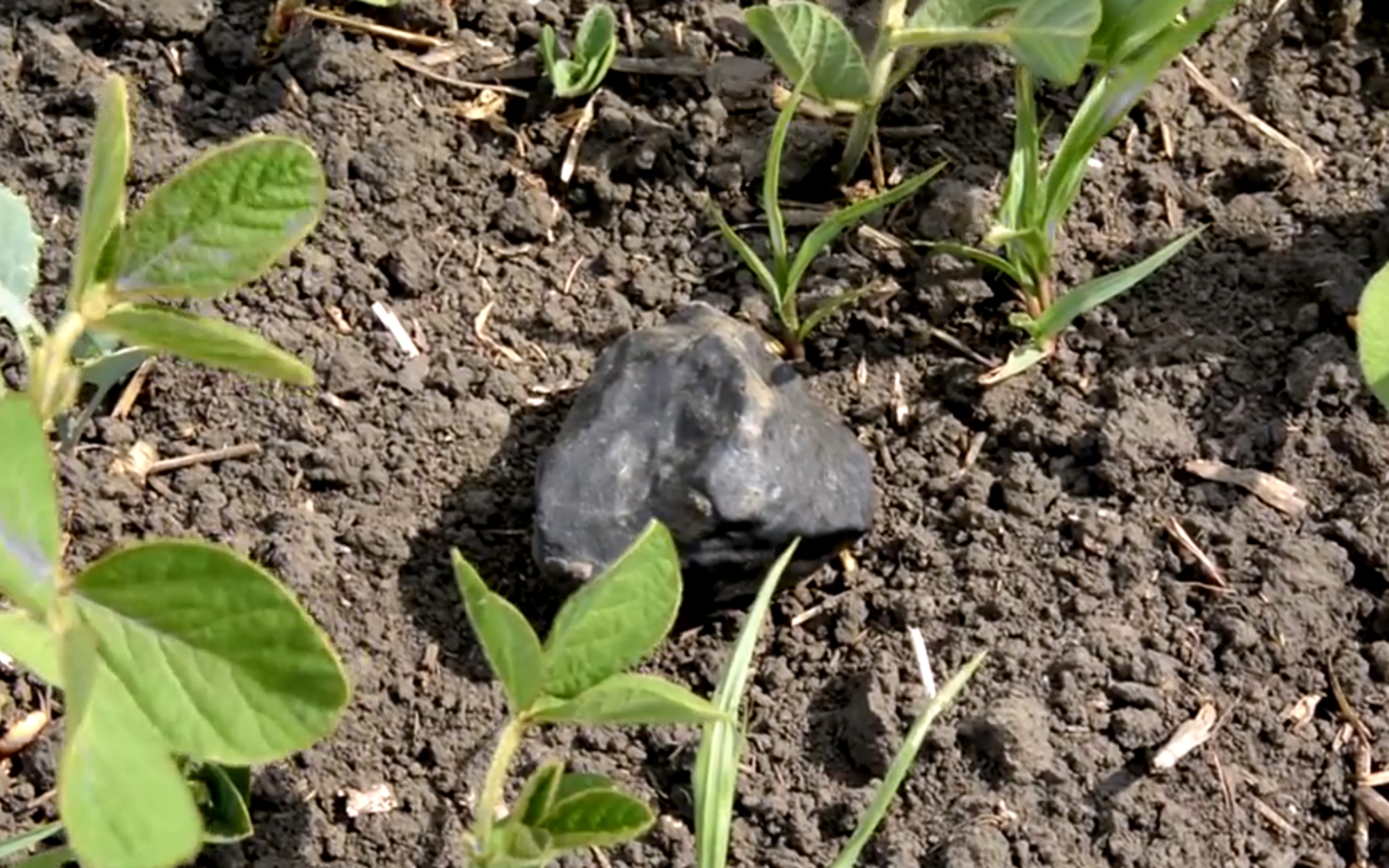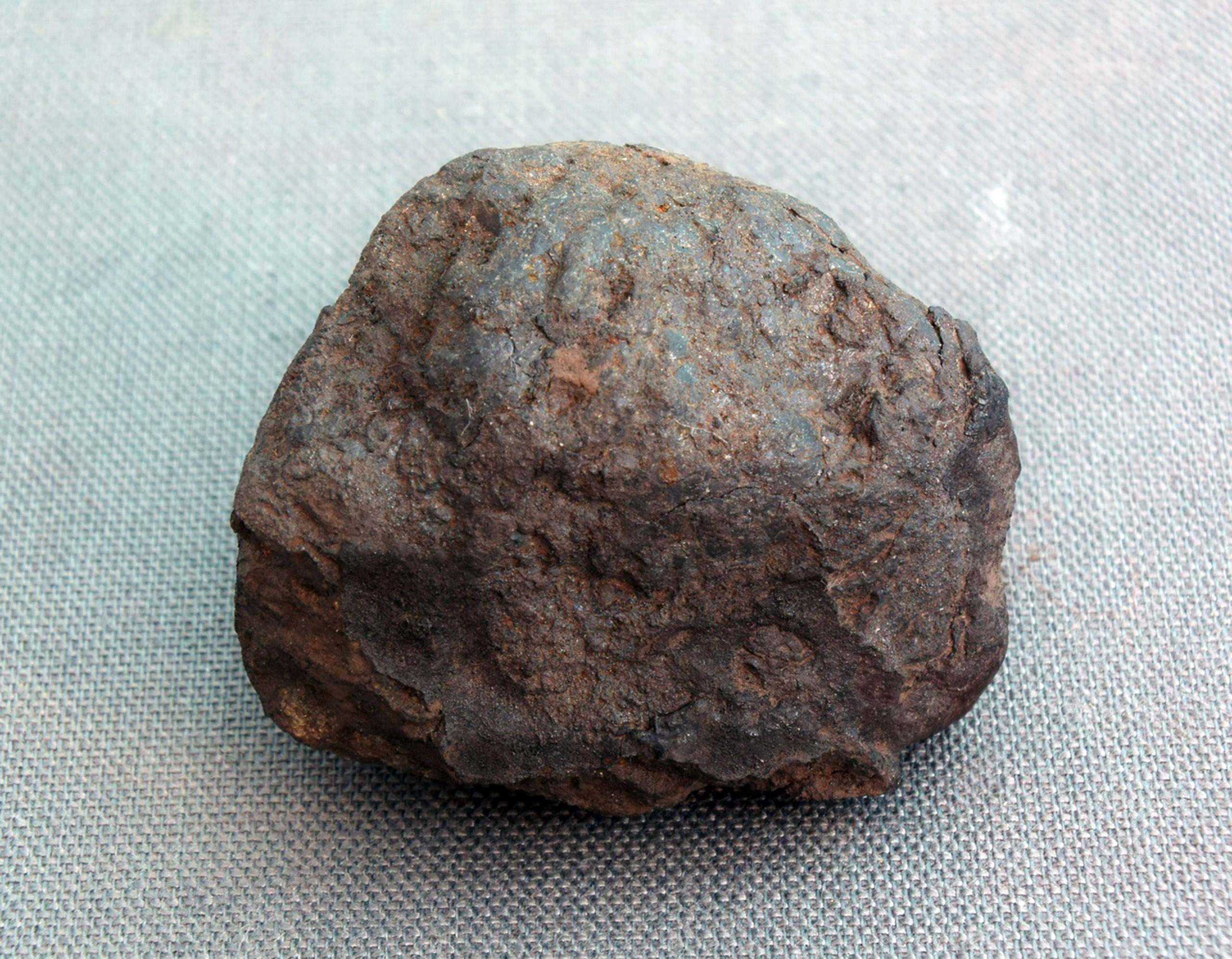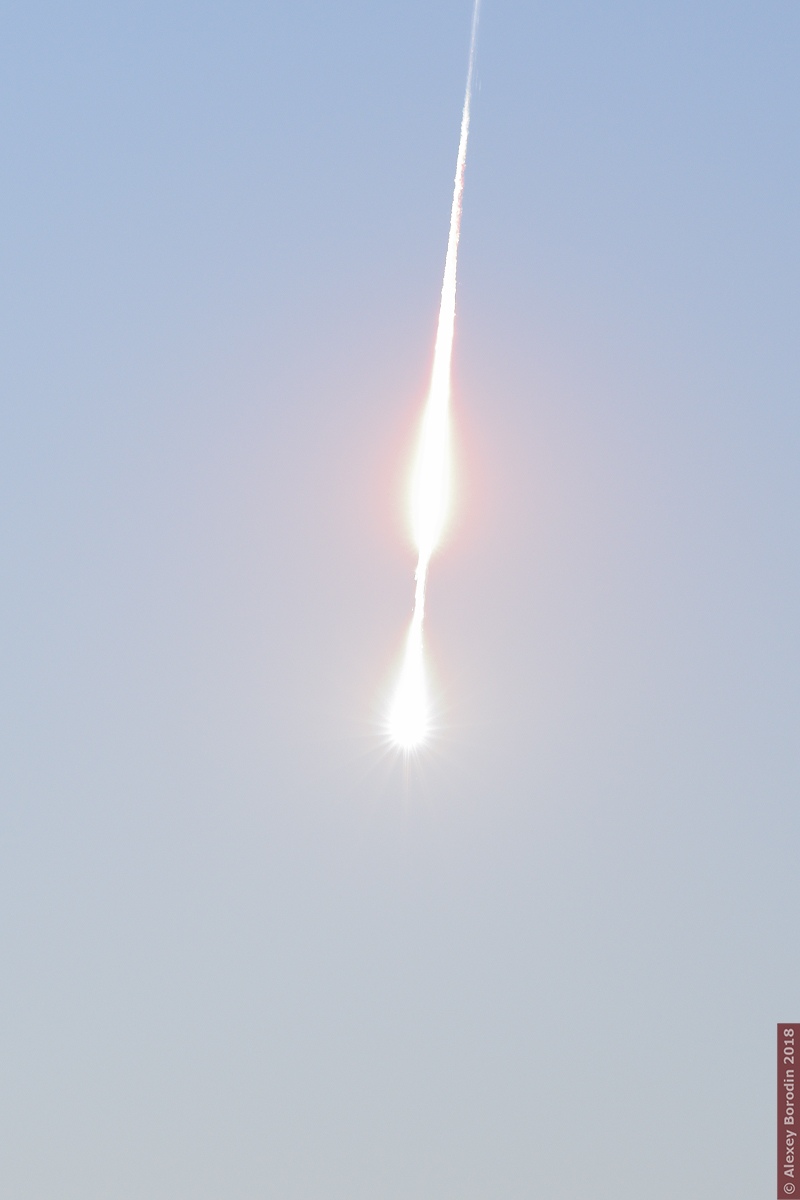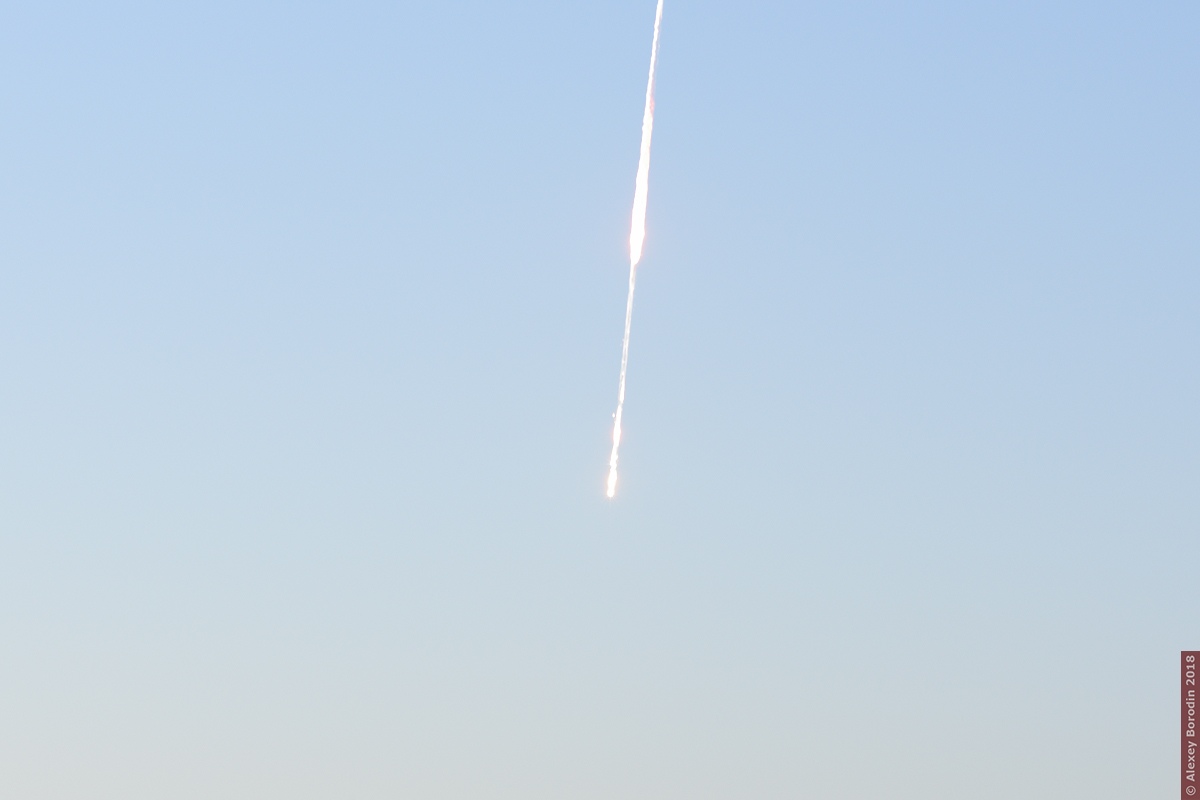OZERKI (L6, S4/5, W0) meteorites (>91 specimens, >6.5 kg) found – Fall on 21 June 2018, ~ 4:16:20 a.m. MSK (1:16:20 UTC) near OZERKI (Oзeрки) and Zlobino (Злобино), Stanovlyansky District, Lipetsk, Russia
Last update: 20 July 2018
In the afternoon of 25 June 2018 a search group of the Ural Federal University (UrFU) found the first meteorite (59.85 g, L6) of the 21 June bolide, on a field southeast of Ozerki (Озерки), in an area between Ozerki (Озерки), Zlobino (Злобино) and Zhiloye (Жилое) in Stanovlyansky District, west-northwest of Stanovoye (Становое), near Yelets in the oblast Lipetsk, Russia. The meteorite (2.5 x 4 cm) was found by Григорий Яковлев (Grigory Yakovlev) at location 52.80036, 038.18409. Based on three video recordings the luminous trajectory, dark flight trajectory and strewn field were calculated by UrFU’s Nikolai Kruglikov and Mikhail Larionov together with Esko Lyytinen (Finnish Fireball Network), Maria Gritsevich (University of Helsinki), Jarmo Moilanen and Panu Lahtinen from Finland who had already collaborated in calculating the relevant data of the Annama fall in April 2014. In the afternoon of 24 June there was intense rainfall in the strewn field which could have affected the fallen meteorites. The UrFU team members had been searching for two days before they found the first meteorite on the third day (25 June). In the afternoon of 26 June another four meteorites were found by Alexander Pastukhovich, Grigory Yakovlev and Yevgenia Petrova. Until 26 June 1176 grams of meteorites had been found. The biggest specimen weighing 550.4 grams was found by the UrFU team in the afternoon (~14.40) of 26 June at location 52.80036, 038.16775. Дмитрий Садиленко (Dmitry Sadilenko) and Дмитрий Дмитриевич Бадюков (Dmitry Dmitrievich Badyukov), director of the Laboratory of Meteoritics (ГЕОХИ РАН), have found some meteorites (~ 10 ?) as well. A mass of up to 50 kg could have fallen, according to calculations. The UrFU search team ended its 5-day meteorite search expedition on 27 June and took five meteorites to Yekaterinburg for analysis. A week after the fall a private search team consisting of Mikhail Semenov, Alekseĭ Kiristaev and Timur Kryachko arrived in the strewn field and started searching near the fields where the first UrFU specimens had been found. On 29 June Mikhail Semenov found a 5-gram specimen and a few hours later another ~70-gram specimen on a plowed field near the border between the field and a forest belt. Alekseĭ Kiristaev equally found a meteorite weighing 140 grams in a birch forest belt which apparently had hit a tree during its fall. The next day he found an impact melt specimen as well. On 29 June Timur Kryachko found a specimen weighing 169 grams. While walking 20 to 30 kilometers every day the group are reported to have found six meteorites during their 5-day-meteorite search expedition. On 2 July Ural Federal University presented their meteorites to the media. A team of the Committee on Meteorites of the Russian Academy of Sciences (КМЕТ РАН) was also actively searching within the strewn field and is reported to have found meteorites as well. Members of the Institute of Astronomy of the Russian Academy of Sciences (ИНАСАН РАН) and the Institute of Dynamics of the Geospheres of the Russian Academy of Sciences (ИДГ РАН) including Анна Карташова (Anna Kartashova) found several specimens (apparently including impact melts) weighing between 20 and 700 grams during their meteorite search expedition (27-30 June). In the evening of 26 June a report about the UrFU meteorite search was broadcast in Новости – Липецкое время. On 27 June a short special TV report about the UrFU search expedition was published. Next to the more likely local names (Ozerki (Озерки), Stanovoye (Становое), Yelets (Елец), Lipetsk (Ли́пецк) etc.) even the name Bunin (Бунин) was initially contemplated as a potential official name of the meteorite, since the writer Ivan Alekseyevich Bunin (Ива́н Алексе́евич Бу́нин), who won the Nobel Prize for Literature in 1933, was born in Voronezh (Воро́неж), 136 km from Stanovoye. Until 1 July 2018 several meteorites (estimated between 5 kg and tens of kilograms) had been found in the soybean fields in the area between the villages of Ozerki (Озерки) and Zlobino (Злобино) by several private and academic search groups and individuals. On 20 July 2018 OZERKI was officially registered in the Meteoritical Bulletin Database as L6: OZERKI
Calculated location of brightest flare by CNEOS/NASA (red spot), unconfirmed approximate locations of finds (yellow spots) and calculated potential strewn field (light yellow area) by University of Helsinki/UrFU.
Some approximate but unconfirmed find locations of meteorites on fields between Ozerki (Озерки) and Zlobino (Злобино) according to Russian social media reports.
The first meteorite (59.6 g) in situ, found at location 52.80036, 038.18409 near Ozerki (Озерки) in the afternoon (~14:12) of 25 June 2018 by Григорий Яковлев (Grigory Yakovlev) of the UrFU search team. Photo: UrFU University
The first meteorite (59.6 g) in situ, found near Ozerki (Озерки) in the afternoon (~14:12) of 25 June 2018 by Григорий Яковлев (Grigory Yakovlev) of the UrFU search team. Photo: UrFU University
The first meteorite (59.6 g) in situ, found near Ozerki (Озерки) in the afternoon (~14:12) of 25 June 2018 by Григорий Яковлев (Grigory Yakovlev) of the UrFU search team.
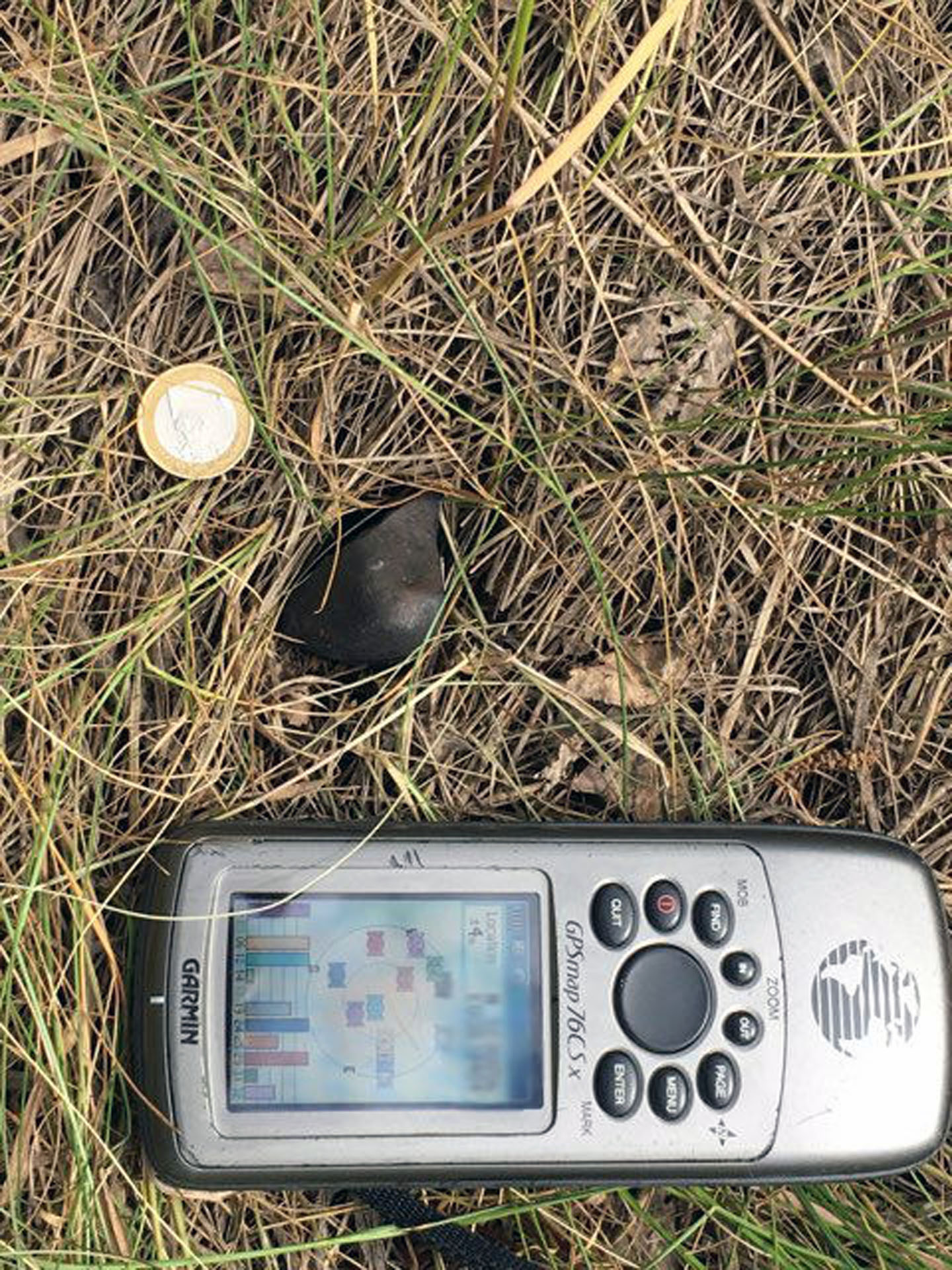
Photo: Ural Federal University
The first meteorite found on 25 June 2018 by Григорий Яковлев (Grigory Yakovlev) of the UrFU search team.
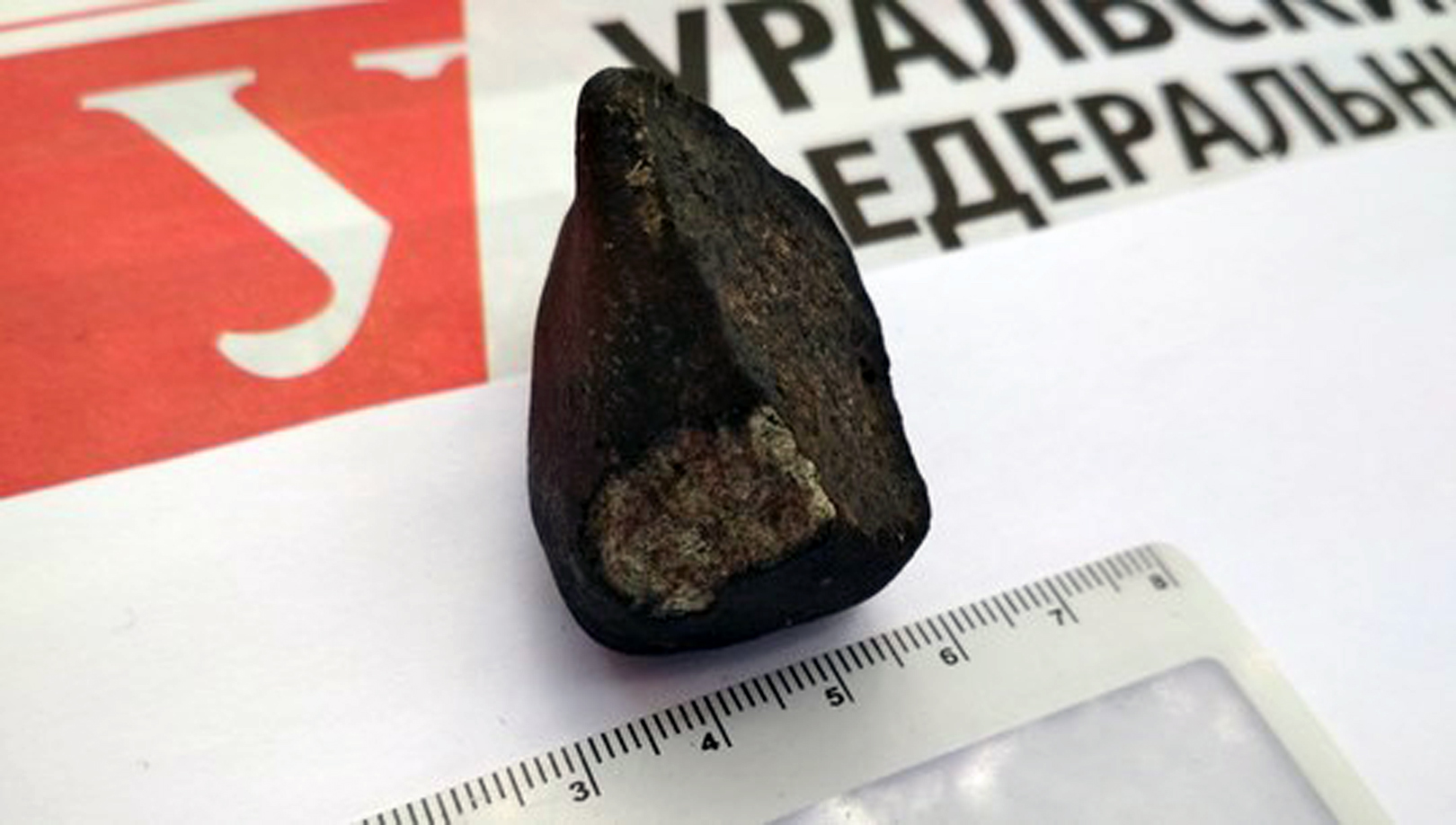
Photo: Ural Federal University
The biggest of four meteorites found by the UrFU search team in the Stanovlyansky District on 26 June 2018. It weighs about 550 grams. The photo might have been taken at location 52.768030, 38.355352 in Stanovoye (Становое).

Photo: Ilya Gorsky, lipetsk media
Lipetsk time (Липецкое время) reporter Elena Sukhacheva (Елена Сухачёва) holding the 550-gram-specimen. Photo: Lipetsk time
Meteorites found by the UrFU search team on 26 June 2018. Image: Lipetsk time (26 June 2018)
The 550.4-gram specimen found at location 52.80036, 038.16775 in the afternoon (~14:40) of 26 June (~ 8.1 x 6.5 cm) in situ next to a 10 Rubel coin (diameter 22 mm). Photo: Aleksander Pastukhovich
The 550.4-gram specimen found at location 52.80036, 038.16775 in the afternoon (~14:40) of 26 June (~ 8.1 x 6.5 cm) in situ next to a 10 Rubel coin (diameter 22 mm). Photo: Aleksander Pastukhovich
Meteorite in situ, found in the afternoon (~13:37) of 26 June. Photo: UrFU University
One of the found meteorites in situ on 26 June. Photo: Aleksander Pastukhovich
The UrFU finds in situ. Photos: UrFUUrFU search team member Evgenia Petrova presenting the 550-gram-specimen found on 26 June. Photo: Ural Federal University
Meteorite found by members of the Institute of Astronomy of the Russian Academy of Sciences and the Institute of Dynamics of the Geospheres of the Russian Academy of Sciences. Image: ФАН-ТВ
Meteorite found by members of the Institute of Astronomy of the Russian Academy of Sciences and the Institute of Dynamics of the Geospheres of the Russian Academy of Sciences. Image: ФАН-ТВ
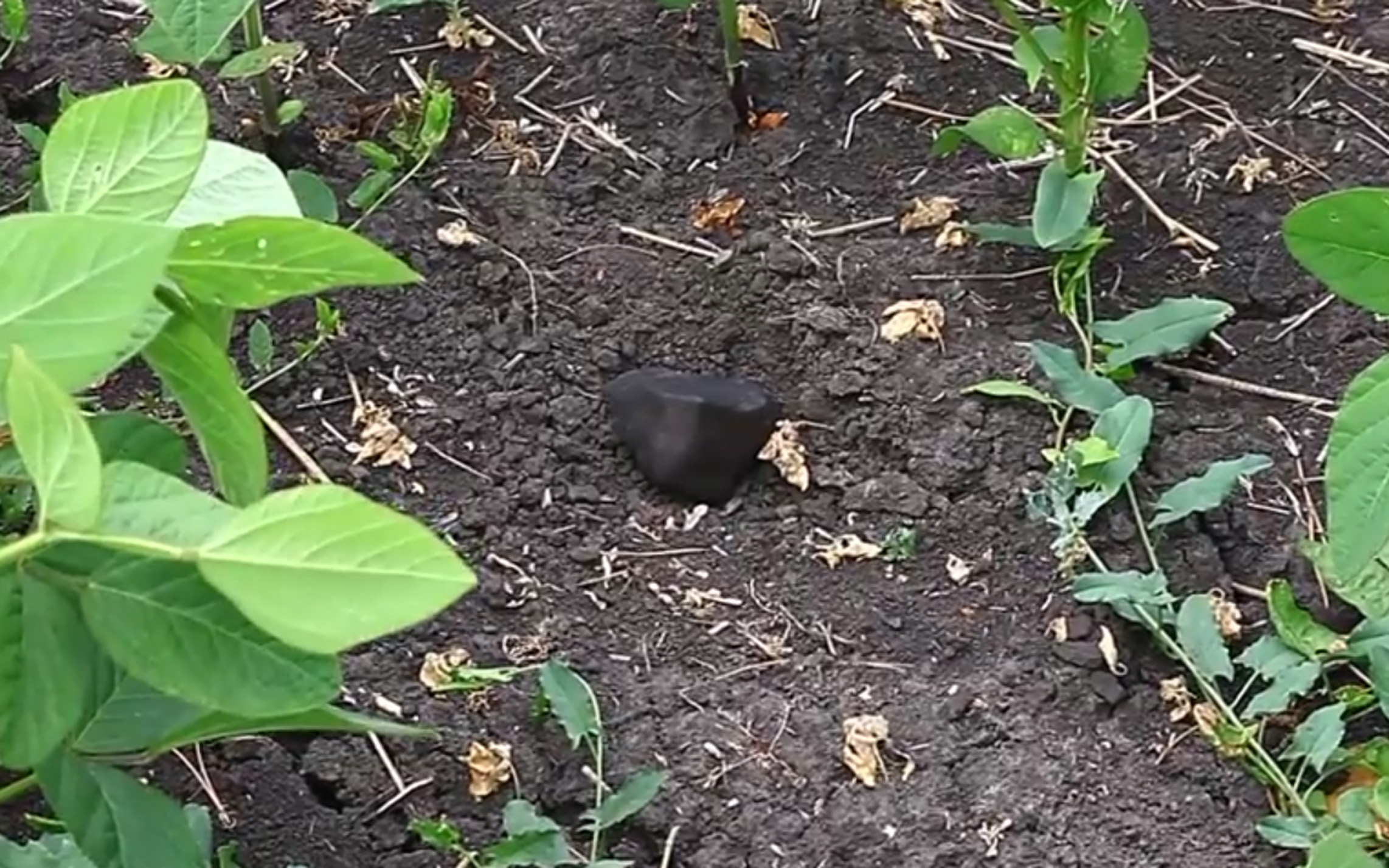
Meteorite found by members of the Institute of Astronomy of the Russian Academy of Sciences and the Institute of Dynamics of the Geospheres of the Russian Academy of Sciences. Image: ФАН-ТВ

Дмитрий качалин (Dmitry Kachalin) holding a meteorite which has been found in the strewn field. Images: Маньяки науки (published 29 June 2018)
Дмитрий Садиленко (Dmitry Sadilenko) of the Laboratory of Meteoritics (ГЕОХИ РАН) holding another meteorite which has been found. Images: Маньяки науки (published 29 June 2018)
A third meteorite in situ. Image: Маньяки науки (published 29 June 2018)

Дмитрий Садиленко (Dmitry Sadilenko) of the Laboratory of Meteoritics (ГЕОХИ РАН) holding the third meteorite from above (left). Two of the three found meteorites (right). Images: Маньяки науки (published 29 June 2018)
A meteorite found by the search team of the Laboratory of Meteoritics (GEOKHI RAS). Image: Маньяки науки
Дмитрий Дмитриевич Бадюков (Dmitry Dmitrievich Badyukov), Laboratory of Meteoritics (GEOKHI RAS), presenting one of the found meteorites. Image: Маньяки науки
A meteorite (169 grams, est. ~ 5 x 7 cm) in situ, found by Тимур Крячко (Timur Kryachko) in the evening of 29 June 2018. Photo: Timur Kryachko
UrFU press release (17:57, 25 June 2018)
UrFU press release (13:02, 26 June 2018)
UrFU press release (11:42, 27 June 2018)
University of Helsinki (29 June 2018)
UrFU press release (15:40, 2 July 2018)
The bolide
A large daytime bolide (azimuth ~ 57°) was witnessed above the border of the Russian oblasts Tula and Lipetsk on 21 June 2018 at about ~ 4:16:20 a.m. MSK (1.16:20 UTC) from Yefremow, Yelets, Kursk, Lipetsk, Voronzeh and Orel. The meteoroid entered the atmosphere at a very steep angle of about 79 degrees making the calculated strewn field rather narrow (3-4 square kilometers). One very loud and several weaker detonation booms were heard in the area and have been recorded on video from Yefremov (Ефремов). One female ear-witness reports having heard a crackling or rustling sound which is created during the ablation of the meteoroid during its luminous atmospheric trajectory.
The bolide’s detonations were initially registered by 4 infrasound stations of the International Monitoring System (IMS): IS43 (Russia – Dubna), IS26 (Germany), IS48 (Tunisia) and IS42 (Portugal – Azores Island). Later detections of at least 5 other IMS stations were announced.
CNEOS/NASA (23 June 2018) calculated the following data based on geostationary satellites of the Ministry of Defense and the US Department of Energy:
Peak Brightness of the bolide: 1.16:20 UTC , 21 June 2018 at an altitude of 27.2 km above latitude 52.8 N, longitude 38.1 E
Velocity 14.4 km/s
Total Radiated Energy (J): 122.4e10
Calculated Total Impact Energy (kt): 2.8
Three snapshots of the luminous trail. Photos by Алексей Бородин (Alexey Borodin).
Photos of the ionization trail by Анжелика Кобылкина (Anzhelika Kobylkina), taken seconds after the bolide’s appearance.
Ionization trail, seen in a southeastern direction about 15 seconds after bolide’s appearance from location ~ 53°20’27.80″N, 37° 1’36.88″E in Лужны (Luzhny), Tula oblast. This is 93.59 km (ground) from location (ground) of the calculated bolide’s brightest flare. Photo: murena
Ionization trail, seen in a southeastern direction (~ azm. 128°) less than a minute after bolide’s appearance from location 53°20’27.80″N, 37° 1’36.88″E in Лужны (Luzhny), Tula oblast. This is 93.59 km (ground) from location (ground) of the calculated bolide’s brightest flare. Photo: murena
First published video of the bolide recorded from location 52.550468, 39.265145 in Chastaya Dubrava (Частая Дубрава), Oblast Lipetsk. This is ~ 83.31 km (ground) from the calculated location (ground) of the bolide’s brightest flare. Video: Apostol875
Dashcam video (full length) by Александр Дундин (Alexander Dundin) from Stary Oskol (published 21 June 2018 at 1:03 pm), recorded from location 51.526402, 38.023030 (first appearance of bolide’s luminous trail) in Ulitsa Oktyabrskaya in Gorshechnoye, Oblast Kursk. This is ~ 141.7 km (ground) from the calculated location (ground) of the bolide’s brightest flare.
Dashcam video by Евгений Ягодкин (Yevgeny Yagodkin) from location 52.469746, 38.769104 on motorway M-4/E115. This is ~ 58.21 km (ground) from calculated location (ground) of bolide’s brightest flare.
Video by Vladimir Savel’ev filmed 20 km from Yefremov (Ефремов) in the Tula oblast (published 20 June 2018).Ionization trail and detonation sounds in a video which was recorded at location 53.146731, 38.113711 in the Ulitsa Sverdlova 57 in Yefremov (Ефремов), Tula oblast. This is ~38.9 km (on the ground) to the location (ground) of the bolide’s brightest flare. Video by Andy NavsemIgray
Another ear-witness from a house (balcony on the north side), 3rd floor, Lenin street, 28) in Yefremov (Ефремов) near the camera location of the video above is reported to have heard hissing and crackling sounds before two detonation booms. Another one or two seconds later he felt a slight concussion of the five-story building.Ionization trail and main detonation sound (1:20 min.) recorded from Lipetsk region by Natalia Glushkova: Video: Наталья Глушкова (Natalia Glushkova)
The bolide recorded from location 55.533260, 37.725398, north of Domodedowo, ~ 305 km (ground) from the calculated location (ground) of the bolide’s brightest flare.
The dashcam video of the bolide was recorded at the crossing of Ulitsa Polevaya and Ulitsa Malykh (51.717208, 36.200470, first appearance of bolide (azim. ~ 47.84°) to 51.717272, 36.200606, end of bolide), going into Krivetskiy Malyy Pereulok (in north-northeastern direction). This is ~ 176,64 km (distance on ground) from the calculated position (ground) of the bolide’s brightest flare. Video: Alexander Anpilogov
Shadow of ionization trail in video by Александр Омельченко (Alexander Omelchenko) from Kursk, most likely filmed from location ~ 51.790784, 36.170227 in the Festival’naya Ulitsa near the corner of Ulitsa Karla Marksa, which is ~172,66 km (ground) from the calculated location (ground) of the bolide’s brightest flare.
Ionization trail filmed by Владислав Лесных (Vladislav Lesnykh) from Недоходовка (Nedodhodka), possibly from location 52.633798, 37.965218 and only ~ 20.59 km (ground) from the calculated location (ground) of the bolide’s brightest flare.
Video by Максим Костенко (Maxim Kostenko) from the area near Charkiw (Харків), Ukraine. The camera location is approx. 50°2’26.31, 36°23’30.38, about 329 km (ground) from the location of the brightest flare. The location of the TV tower is 50°2’36.71 N, 36°14’5.63″ E. The location of the sixteen-storey building is 50°2’17.80 N, 36°22’18.01 E. (Location calculation by Vladimir Nebotov, 24 June 2018)
Video by Максим Костенко (Maxim Kostenko) from the area near Charkiw (Харків), Ukraine.
Satellite imagesMeteosat 9 images of the ionization trail of the bolide. Eumetsat weather satellite recording of the bolide’s ionization trail (21/06/2018 00:35 – 03:25 UT) Media coverage
In the evening of 26 June a report about the UrFU meteorite search was broadcast in Новости – Липецкое время on ‘Lipetsk time’. (between 5:42 and 7:13 min. in video below)
Новости – Липецкое время (26 June 2018)
Another special report about the meteorite search was published online on 27 June 2018 by ‘Lipetsk time’ and was also broadcast in Новости – Липецкое время (27 June 2018). Click on image below to start the video in a new tab.
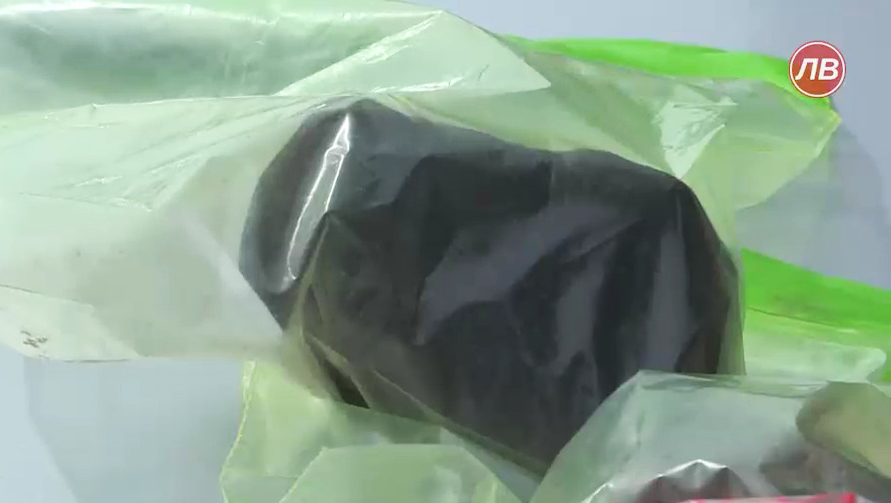
TV report (27 June 2018)
Новости – Липецкое время (27 June 2018)
News report OBL TV (2 July 2018). Click on image below to start the video in a new tab.

OBL TV (2 July 2018, 19:40), Interviews with Alexander Pastukhovich and Grigory Yakovlev. Click on image below to start the video in a new tab.

ФАН-ТВ report about the search of members of the Institute of Astronomy of the Russian Academy of Sciences and the Institute of Dynamics of the Geospheres of the Russian Academy of Sciences (published 3 July 2018)
A video published by Маньяки науки showing Дмитрий качалин (Dmitry Kachalin) meeting Дмитрий Садиленко (Dmitry Sadilenko) of the Laboratory of Meteoritics (ГЕОХИ РАН) who’s searching for meteorites in the strewn field (published on 29 June 2018).
A second video published by Маньяки науки. Дмитрий Дмитриевич Бадюков (Dmitry Dmitrievich Badyukov), head of the Laboratory of Meteoritics (ГЕОХИ РАН) talks about the meteorite fall (published on 3 July 2018).
A third video published by Маньяки науки. Дмитрий качалин (Dmitry Kachalin) presenting the five UrFU finds in the field on 26 June 2018. (published on 5 July 2018).

